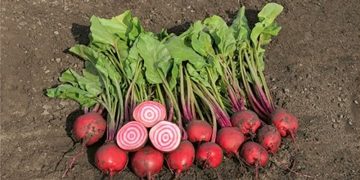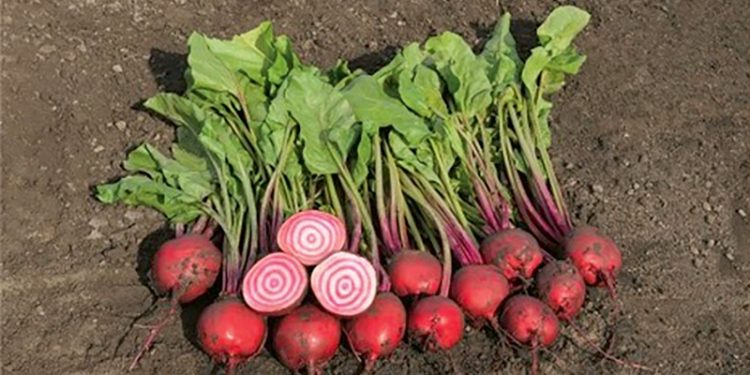At the end of September, a week of Field Days of vegetable breeding firms traditionally took place in the Netherlands, where already familiar and completely new varieties were presented. That is known, the breeding of biennial vegetable species lasts 15-17 years. This is an expensive and laborious process, so all breeding firms study market trends very carefully in order to be able to predict which varieties and hybrids will be in demand in the long term.
Where then do you see the future of the vegetable market?
- In the diversification of the offer, both in terms of species and products.
- In the variety of colors, because different colors not only contribute to the attractive appearance of products, but different plant pigments improve human health.
- In products of smaller size (cabbage, cauliflower, broccoli, lettuce heads, pumpkin, carrots, beets) – they are better suited for modern small households and reduce food loss.
- Resistant to diseases and pests – it reduces dependence on plant protection products and provides a cleaner, less contaminated end product.
Also important aspects of cultivation technology:
- creation of varieties that would be able to better adapt to changing climate conditions;
- varieties specially suitable for modern technology (mechanized harvesting or hydroponics) ;
- varieties suitable especially for organic cultivation.
In the foreground-more resistant varieties
The well-known firm Bejo is trying to create more resistant varieties that would be able to provide good yields in different climatic conditions. It is also important that the varieties are resistant to various, at least widespread, infections in order to be suitable for Biological and integrated cultivation.
For example, yellow onions ‘Hylander’ F1, Red ‘Redlander’ F1 and shallots from seeds ‘Innovator’ F1 have high resistance to onion true powdery mildew (Peronospora destructor).
A new promising table beet hybrid ‘Bazzu’ F1 is moderately resistant to the soil-dwelling infection Rhizomania spp. spread in recent years in the Scandinavian countries. This infection has not yet been detected in Latvia, but in the era of globalization, it can also come to us over time. Also, this hybrid is resistant to beet necrotic leaf vein yellowing virus (BNYVV) and multiple leaf spot. Its roots have a universal use-for fresh consumption, processing and long-term storage.
An interesting novelty is the Nantes-type carrot hybrid ‘Nagovia ‘ F1 (not to be confused with the previously familiar ‘Negovia’). It is early, high-yielding, with a particularly smooth bark and resistance to root pythiosis (Pythium spp.). It is one of the most destructive root rot during storage, in the same way, this infection can cause carrot sprouts to fall out. Another very interesting carrot hybrid is ‘Nordhorn’ F1. It is suitable for harvesting and long-term storage of medium-sized roots (150-250 g). This hybrid is very similar to the popular hybrid ‘Nerac’ F1, but surpasses it in healthiness (good disease resistance), very persistent leaves (this is important during mechanized harvesting of carrots) and even better resistance to bursting and breakage. Another advantage – highly aligned in size and shape of the root, thanks to which there is a higher yield of the market commodity crop.
The Japanese firm Takii deals not only with vegetables and ornamental plants, it presented this year the ‘Ground Control’ variety of velvets (Tagetes patula), which is specially created to control nematodes harmful to plants. The cultivation of this variety not only reduces the pest population and the crop losses caused by it, but also increases the amount of organic matter in the soil, improves its structure and increases biodiversity.
Predicts consumer interest in a variety of cabbage plants
The future of the vegetable market is seen in smaller-sized products, including a variety of cabbage plants.
Photo: from the archive of “AGRO TOPA”
Several breeding firms expect the demand for traditional white head cabbage to decrease in the future, while consumer interest in other cabbage plants will increase.
The offer of cauliflower hybrids is replenished by the firm Bejo ‘Newlyn’ F1 – cauliflower for collection in late autumn. It retains its healthiness for a long time and tolerates night frosts well. Heads remain long during realization.
For its part, the firm Sakata offers a new violet cauliflower hybrid ‘Purpurina’ F1. It grows rapidly, forms beautiful rounded heads of an intense purple color and is suitable for cultivation from spring to autumn.
The firm Rijk Zwaan puts emphasis on disease resistance, this is demonstrated by a new hybrid ‘Johnsson’ F1, which was widely bred in the Netherlands this year. The Romanesco type cauliflower ‘Delaverde’ F1 is also distinguished by Good disease resistance and strong growth. It is suitable for autumn harvest.
The news is also among broccoli. The firm Sakata presents a new variety of purple broccoli ‘Purple Magic’, which produces in late summer and autumn, forming heads weighing around 400 g.
White cabbage is not forgotten. A new hybrid of the Bejo company ‘Expectation ‘ F1 is designed for long-term storage, has good resistance to thrips (Thrips spp.) and various leaf infections. Heads are easy to clean. This hybrid is suitable for growing in clayey soil. Another hybrid ‘Chinook’ F1 is intended for processing, it forms depressed heads, is distinguished by high yields. Suitable for harvesting in August, early September.
A wide range of white-headed cabbage offers has the firm Rijk Zwaan. Hybrids ‘Dulcima’ F1 and’ Longma ‘ F1 are particularly resistant to thrips. The hybrid ‘Missourima’ F1, on the other hand, is high-yielding, grows very strongly and is particularly suitable for the production of organic sauerkraut. Hybrid ‘Axioma’ F1 is designed for long-term storage, the seedlings of which can be exhibited up to 10. June. Around this time, the soil has already warmed up enough for mineralization processes to activate (namely, nitrogen is released from organic matter). Damage from thrips around this time is also less.
Growing pumpkin popularity
Throughout Europe, the popularity of pumpkins has increased in the last ten years. A lot of interesting news has the company Sakata. For example, ‘Mieluna’ is the earliest butternut-type variety from the current Sakata offering. It has very high–quality fruits with dark orange flesh, weighing on average 1.1-1.2 kg.
Adding to the already familiar range of Halloween-type varieties (‘Spyro’, ‘Flynn’, ‘Boomer’ and ‘Terrafin’), the company’s breeders are beginning to introduce breeders to new numbers in the range of Spagetty and miniature pumpkins. Basic trend-smaller fruits for small families, easy to prepare, including in the microwave. It remains to wait for these numbers to get the name and their seeds will be offered to a wider range of growers.































